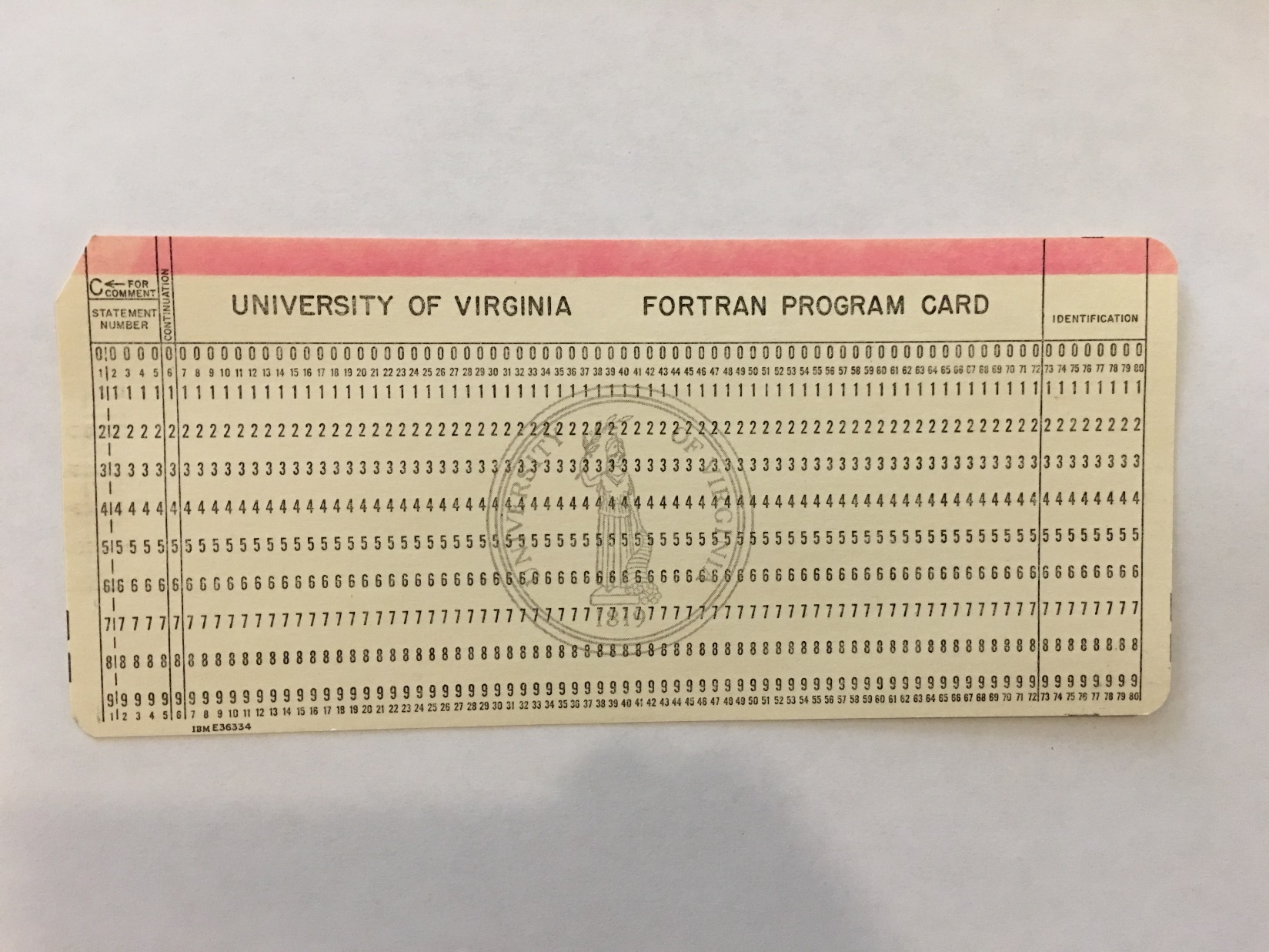Starting with Fortran
Some History
Fortran and Algol
Algol 60 is of similar age and similar design. Some sample code (from Wikipedia):
procedure Absmax(a) Size:(n, m) Result:(y) Subscripts:(i, k);
value n, m; array a; integer n, m,i, k; real y;
comment The absolute greatest element of the matrix a, of size n by m, is transferred to y, and the subscripts of this element to i and k;
begin integer p, q;
y := 0; i := k:= 1;
for p := 1 step 1 until n do
for q := 1 step 1 until m do
if abs(a[p, q]) > y then
begin
y := abs(a[p, q]); i:= p; k := q
end
end Absmax
Note that in Algol, a begin/end block is logically a single statement.
Similar code in early Fortran would look like
SUBROUTINE ABSMAX(A,N,M,I,K,Y)
INTEGER N, M
INTEGER A
DIMENSION A(N,M)
INTEGER Y
INTEGER I, K
INTEGER P, Q
C THE ABSOLUTE GREATEST ELEMENT OF ARRAY A OF SIZE NxM IS COMPUTED AND RETURNED
C IN Y. THE CORRESPONDING LOCATION SUBSCRIPTS ARE RETURNED IN I AND K.
Y=0
I=1
K=1
DO 200 P=1,N
DO 100 Q=1,M
IF ( ABS(A(P,Q)) .LE. Y) GO TO 10
Y=ABS(A(P,Q))
I=P
K=Q
10 CONTINUE
100 CONTINUE
200 CONTINUE
END
Some of the peculiarities of the first versions of Fortran, such as FORTRAN IV, were due to IBM’s use of punch cards as input devices.

Punch cards were prepared on machines called keypunches. The character set on a keypunch was limited, so Fortran used all capital letters and few other characters. There was no opportunity to correct typograpical errors, which may account for early Fortran ignoring spacing within keywords. The layout in Fortran was determined by the physical layout of the cards; this, combined with the need to write a simple, memory-conserving compiler, resulted in a strict column-oriented syntax.
This is called fixed format. It required that the first column be reserved for the C that introduced a comment. The next four columns were for numerical statement labels. Column six was reserved for continuation characters. Statements began in column 7 and could extend through column 72; anything from column 72 to 80 was ignored by the compiler. These columns were frequently used to number the cards.
Algol, on the other hand, was written for paper tape. Whereas punch cards are record (i.e. line) oriented, paper tape is a continuous medium, so the semicolon marked the end of a statement. Algol’s descendants, which include C and C++, were also written for paper tape. Semicolons continue to be used in many languages to mark the end of a sentence; such languages do not use continuation markers. Record-oriented languages such as Fortran and Python do not require statement markers (though both modern Fortran and Python allow them) and provide for continuations.
Newer Fortran
The language has changed dramatically since 1957 but the name has never changed. The above subroutine in modern, free format Fortran is
subroutine absmax(a,i,k,y)
! The absolute greatest element of array A of size NxM is computed and returned
! in Y. The corresponding location subscripts are returned in I and K.
integer, dimension(:,:), intent(in) :: a
integer, intent(out):: i,k
integer, intent(out):: y
integer :: p,q
y=0; i=1; k=1
do p=1,size(a,1)
do q=1,size(a,2)
if (abs(a(p,q)) > y) then
y=abs(a(p,q))
i=p
k=q
endif
enddo
enddo
end subroutine
Strengths and Weaknesses
| Fortran | C++ (not C) |
|---|---|
| (2003/8) Many math function built-ins | Limited mathematical built-ins |
| Multidimensional arrays a first-class data structure, array operations supported | True multidimensional arrays not possible without add-on libraries (Blitz++, Boost) |
| Does not support true strings yet, just character arrays | Good string handling (compared to C) |
| Classes somewhat clunky. Modules fill much of this role | Straightforward implementation of classes (modules in C++20 standard) |
Compiled Languages
Fortran and C++ are compiled languages. Readers who are accustomed to interpreted languages such as Python, R, and MATLAB should be aware that compiled languages are generally more complex than interpreted languages and require more steps in the development process.
A compiler produces a stand-alone program for a given platform (cpu+operatingsystem). The output of a compiler is an object file, represented with a.osuffix on Unix. Object files are in machine language but cannot be run independently.
A linker takes the .o files and any external libraries and links them into the executable. Normally the linker is invoked through the compiler.
An interpreter interprets line by line. The executable that is run is the interpreter itself. Programs for interpreters are often called scripts. Scripts are frequently cross platform, but the interpreter itself must be appropriate to the platform.
Compared to interpreted languages such as Python, compiled languages are:
- Generally stricter about typing (static typing) and memory allocation.
- Memory must frequently be managed explicitly by the programmer.
- Generally produce faster and more efficient runs. Interpreted languages are:
- Generally looser about typing (dynamic typing).
- Generally have dynamically sized data structures built in.
- Often run very slowly.
The workflow for compiled code consists of compiling, correcting syntax errors if necessary, then linking. The process of compiling and linking is generally called building. The product of a build cycle is the executable (also called a binary). For each change, the entire process must be repeated. It is easy to forget to recompile, then wonder why the change is not reflected in the output.